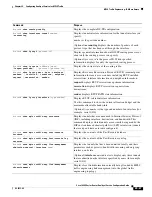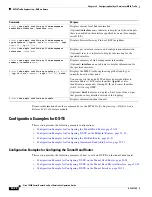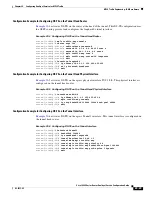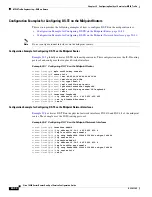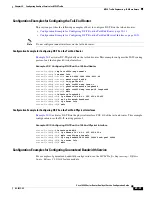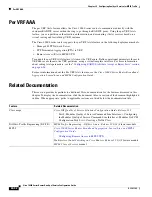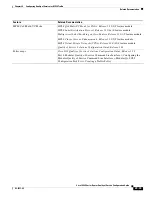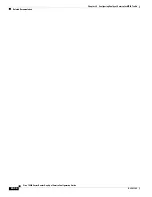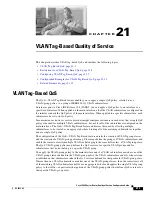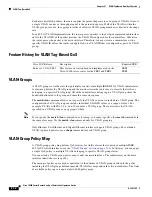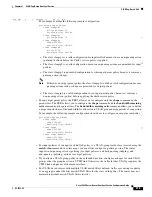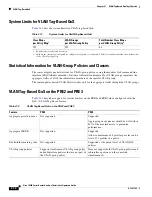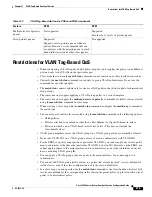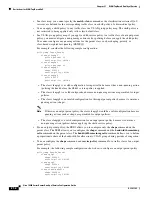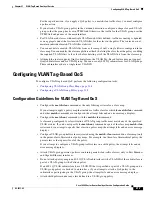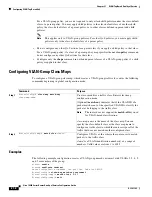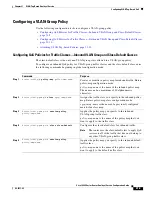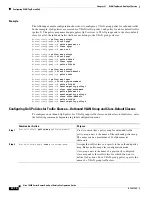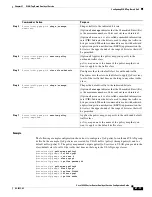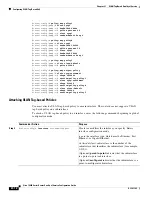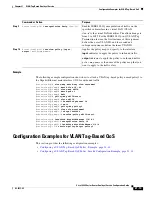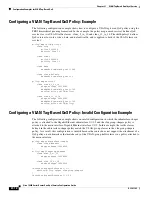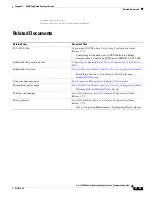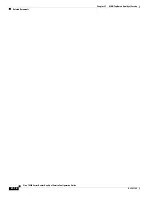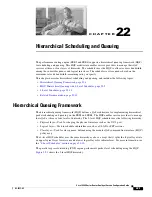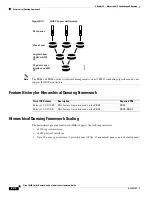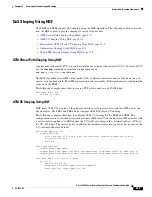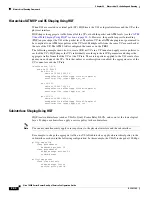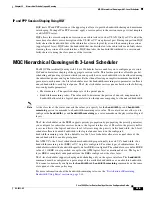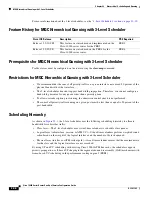
21-7
Cisco 10000 Series Router Quality of Service Configuration Guide
OL-7433-09
Chapter 21 VLAN Tag-Based Quality of Service
Configuring VLAN Tag-Based QoS
For the input direction, if you apply a QoS policy to a match-vlan traffic class, you must configure
a police action.
•
If you attach a VLAN-group policy in the outbound direction, configure a shaper for each VLAN
group so that the group has its own VTMS link. Otherwise, the traffic for that VLAN group uses the
VTMS link and queues of the main interface.
•
For VLAN-based classes with multiple VLAN match filters defined, traffic accounting is updated
as an aggregate under the first match-VLAN filter for the class in the policy. The router does not
maintain individual match-VLAN filter statistics.
•
You cannot delete a match-VLAN filter from a class map if only a single filter is configured in the
class map. You can modify the class map filters either by deleting the class from the policy or adding
the required VLAN filters to the class before deleting all of the VLAN filters from the class map.
•
Although the router supports QinQ subinterfaces, the VLAN Tag-Based feature does not support
QinQ subinterfaces under a VLAN group. You can use only 802.1Q subinterfaces for VLAN groups.
These subinterfaces have a single inner VLAN ID.
Configuring VLAN Tag-Based QoS
To configure VLAN tag-based QoS, perform the following configuration tasks:
•
Configuring VLAN-Group Class Maps, page 21-8
•
Configuring a VLAN-Group Policy, page 21-9
Configuration Guidelines for VLAN Tag-Based QoS
•
Configure the
match-vlan
command as the only filtering criteria for a class map.
If you attempt to apply a policy map that includes a traffic class for which the
match-vlan
command
and other
match
commands are configured, the attempt fails and an error message displays.
•
Configure the
match-any
command with the
match-vlan
command.
A class map configured for classification of VLAN-group traffic must match any of the specified
VLAN criteria. If you do not specify the
match-any
command as part of the class map
match-vlan
criteria and you attempt to specify that class in a policy map, the attempt fails and an error message
displays.
•
Configure VLAN-group traffic classes (created using the
match-vlan
command in a class map) only
in the parent class of hierarchical policy maps. For example, in a three-level hierarchical policy, the
parent class is the topmost level of the policy.
If you attempt to configure a VLAN-group traffic class in a child policy, the attempt fails and an
error message displays.
•
Attach VLAN-group policies (policies containing match-vlan traffic classes) only to Fast Ethernet
and Gigabit Ethernet interfaces.
•
Do not attach a policy map to an 802.1Q VLAN subinterface with a VLAN ID if the subinterface is
part of a VLAN-group with a defined policy.
If an 802.1Q VLAN subinterface has a VLAN ID that is specified as part of a VLAN-group and a
VLAN-group policy is attached to an interface, if you attempt to attach a QoS policy to the
subinterface participating in the VLAN group, the attempt fails and an error message displays.
•
Attach child policies under any class defined in a VLAN-group policy.

